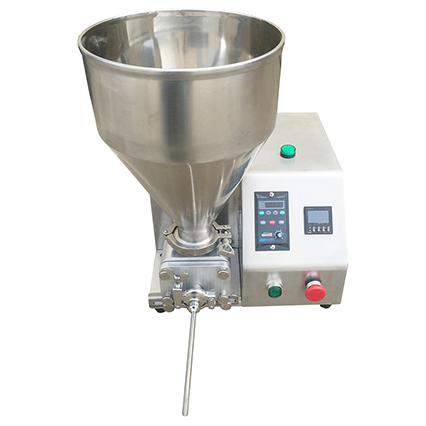Exploring Traditional and Modern Dorayaki Filling Varieties
Dorayaki, the beloved Japanese confection consisting of two fluffy pancake-like layers sandwiching sweet fillings, has captured hearts worldwide. While the classic red bean paste (anko) filling remains iconic, creative bakers and food enthusiasts have expanded the repertoire of dorayaki fillings to include both traditional Japanese flavors and contemporary interpretations. Understanding these diverse filling options helps appreciate the versatility of this cherished wagashi.
Traditional Japanese Dorayaki Fillings
Classic Red Bean Paste Variations
The quintessential dorayaki filling, red bean paste or anko, comes in several distinct varieties. Tsubu-an, made from coarsely mashed azuki beans, offers a rustic texture where you can still feel individual beans. In contrast, koshi-an presents a silky-smooth consistency achieved by removing bean skins and thorough straining. Both varieties balance sweetness with the natural earthiness of azuki beans, creating that characteristic Japanese confectionery taste.
Modern interpretations of anko fillings include reduced-sugar versions for health-conscious consumers and specialty variants incorporating roasted green tea or black sesame for added complexity. Some artisanal makers even age their anko to develop deeper flavors, similar to how fine wines mature over time.
Chestnut and Sweet Potato Classics
Chestnut paste (kuri-an) represents another traditional dorayaki filling that peaks in popularity during autumn. The natural sweetness and subtle complexity of Japanese chestnuts create a sophisticated filling that pairs beautifully with the soft pancake exterior. Similarly, sweet potato paste (imo-an) offers a naturally sweet, earthy filling that showcases the versatility of Japanese root vegetables in confectionery.
These traditional fillings often undergo seasonal adjustments, with some makers incorporating holiday-specific elements like gold leaf during New Year celebrations or sakura essence during cherry blossom season.
Contemporary Dorayaki Filling Innovations
Cream-Based Modern Fillings
Modern dorayaki interpretations often feature cream-based fillings that cater to international palates. Whipped cream variants might include matcha cream, chocolate ganache, or vanilla custard. These lighter fillings offer a different textural experience while maintaining the essence of dorayaki's sandwich-like construction. Some makers combine traditional and modern elements, creating hybrid fillings like matcha cream with red bean paste or chocolate cream with chestnut chunks.
Seasonal fruit creams have also gained popularity, with strawberry, mango, and yuzu variations appearing throughout the year. These fresh, vibrant fillings appeal particularly to younger consumers and those seeking lighter alternatives to traditional bean pastes.
International Fusion Flavors
The globalization of Japanese cuisine has inspired creative dorayaki fillings that bridge cultural boundaries. Tiramisu-inspired coffee cream, French-style crème pâtissière, and even cheese-based fillings have emerged in specialty shops. These fusion varieties maintain the dorayaki's core identity while introducing familiar international flavors.
Some innovative makers experiment with savory-sweet combinations, such as cream cheese with honey or salted caramel with roasted nuts. These combinations challenge traditional boundaries while creating new appreciation for dorayaki's versatility.
Specialty and Seasonal Dorayaki Fillings
Limited Edition Creations
Seasonal specialties drive innovation in dorayaki fillings throughout the year. Spring brings sakura-flavored cream fillings, while summer features refreshing citrus and tropical fruit variations. Autumn introduces warming spices and chestnut-based fillings, and winter welcomes rich chocolate and warming ginger combinations.
Premium limited editions might feature rare ingredients like Japanese honey, artisanal chocolate, or specialty fruit preserves. These exclusive offerings often command higher prices and create anticipation among dorayaki enthusiasts.
Health-Conscious Alternatives
Responding to growing health awareness, many makers now offer dorayaki fillings with reduced sugar content or alternative sweeteners. Some create fillings using sugar alternatives like monk fruit or stevia, while others focus on naturally sweet ingredients like roasted sweet potato or fruit purées. Protein-enriched fillings, using ingredients like soy or nuts, cater to health-conscious consumers without sacrificing taste.
Vegan variations replace traditional ingredients with plant-based alternatives, opening dorayaki enjoyment to wider audiences. These might include coconut cream-based fillings or modified bean pastes using alternative sweetening methods.
Frequently Asked Questions
How long do different dorayaki fillings last?
Traditional bean paste fillings typically last 3-5 days when properly refrigerated. Cream-based fillings should be consumed within 1-2 days. Always check storage instructions as preservation times vary by ingredients used.
Can I make dorayaki fillings at home?
Yes, many dorayaki fillings can be prepared at home. Simple options include sweetened whipped cream or store-bought anko. More advanced home cooks might tackle homemade bean paste or custard fillings, though these require specific techniques and ingredients.
Which fillings work best for gift-giving?
Traditional fillings like anko or chestnut paste generally hold up better for gift-giving. These stable fillings maintain their quality longer and don't require immediate refrigeration. Consider seasonal variations that align with special occasions or holidays.


